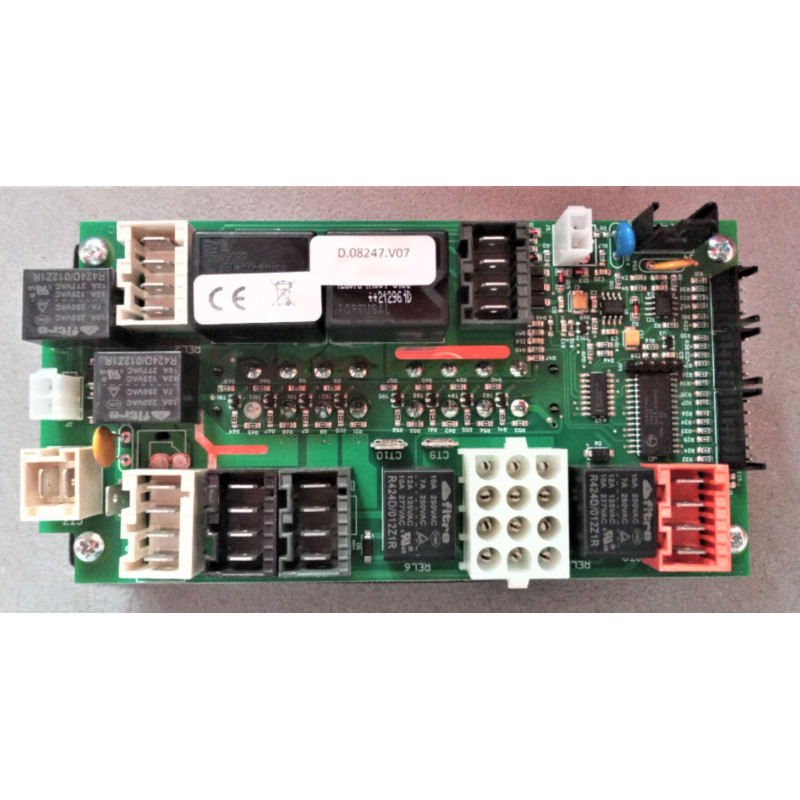
网站公告
more- Online Shopp... 25-04-26 01:56
- Online Shopp... 25-04-26 01:54
- Buy Checks O... 25-04-26 01:53
- Погружаемся ... 25-04-26 01:53
Long Distance Wired Serial Communication With Arduino Using RS485 And CAT Cables
HeathWeiner3941149 2025.04.25 08:26 查看 : 2
With RS485 communication distances of 1200 m are possible.Differential signal lines also allow higher bit rates than possible with non-differential connections. RS232 has a separate communication line for transmitting and receiving which-with a well written protocol-allows higher effective data rates at the same bit rate than the other interfaces. We also see that the maximum allowed voltage levels for all interfaces are in the same range, but that the signal level is lower for the faster interfaces.Because of this RS485 and the others can be used in situations with a severe ground level shift of several volts, where at the same time high bit rates are possible because the transition between logical 0 and logical 1 is only a few hundred millivolts.Interesting is, that RS232 is the only interface capable of full duplex communication. If the CPHA bit is 1, the /SS line may be tied low between successive transfers.
The DWOM bit determines whether Port D needs pull-up resistors; it should be set to 0. The MSTR bit determines whether the device is a master or slave. In most higher level protocols, one of the nodes is defined as a master which sends queries or commands over the RS485 bus. In general RS485 is designed for multi-drop, "daisy-chain" operation over a single twisted pair cable with a nominal characteristic impedance of 120 Ohms. Since it uses a differential line over twisted pair (like EIA-422), it can span relatively large distances (up to 4000 feet or just over 1200 metres). Differential signals and twisting allows RS485 to communicate over much longer communication distances than achievable with RS232. Default, all the senders on the RS485 bus are in tri-state with high impedance. RS485 drivers automatically return to their high impedance tri-state within a few microseconds after the data has been sent. Pre-coded device drivers configure the SPI for a standard data format, and it is easy to customize a data format and baud rate for your application. If the /SS input to a slave is inactive (high), the slave ignores the SCK input, does not transmit or receive data, what is rs485 cable and keeps its MISO output in a high-impedance state so that it does not interfere with the SPI bus.
On the other hand, the secondary serial port (Serial2) is implemented using hardware pins PA3 (input) and PA4 (output), and is controlled by the associated interrupts IC4/OC5 and OC4, respectively. The primary serial port, Serial1, is supported by the 68HC11's on-chip hardware UART (sometimes called a USART), and does not require interrupts to work properly. The equipment located along a set of RS-485 wires are interchangeably called nodes, stations or devices. The RS232 protocol provides for four handshaking signals called ready to send (RTS), clear to send (CTS), data set ready (DSR), and data terminal ready (DTR) to coordinate the transfer of information. Therefore the trigger level of the RS232 interface is set relatively high at ±3 Volt. If the clock idles in the high state, the leading edge of the clock is a falling edge. For higher speeds and longer lines, the termination resistances are necessary on both ends of the line to eliminate reflections.
The Modbus protocol uses serial communication lines, Ethernet, or the Internet protocol suite as a transport layer. For example, there can be a device that measures temperature and another device to measure humidity connected to the same cable, both communicating measurements to the same computer, via Modbus. There are other implementations of RS485 networks where every node can start a data session on its own. There are a variety of ways the MOSI, MISO, SCK and /SS pins on your QVGA Controller can be connected. If you have not yet compiled the GETSTART program and you want to do the exercises here, open GETSTART.C in your TextPad editor, click on the Make Tool (the Make icon), and after the compilation is done, enter the Terminal Program by clicking on the terminal icon and use the "Send Text File" menu item to send GETSTART.DLF to the QVGA Controller. An RS485 transceiver is present on the QVGA Controller, and its data direction is controlled by pin 4 of port PPC of the peripheral interface adapter (PIA). It can only transmit/receive data serially, so it first converts the parallel data into serial data and then transmits the data. It may be that only the byte sent from the master to the slave is meaningful; nevertheless, each device simultaneously transmits and receives one byte.

?? 0
Copyright © youlimart.com All Rights Reserved.鲁ICP备18045292号-2 鲁公网安备 37021402000770号

